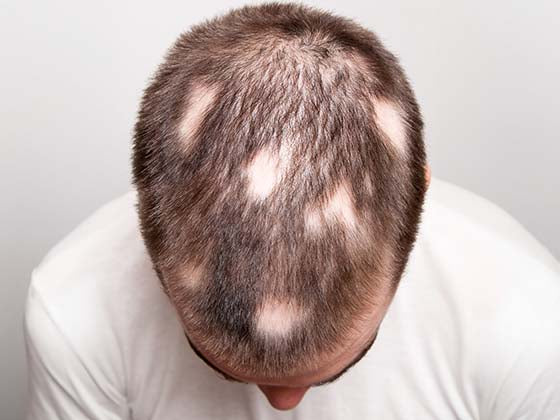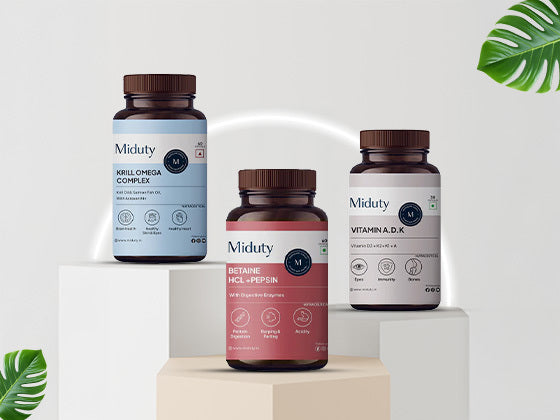- Melanin & Sun Protection
- Busting Myths
- Sun Care Practices
- Choosing & Applying Sunscreen
- Preventing Hyperpigmentation
- Sunburn Treatment
- Customised Sun Care
- FAQs
Sun care is important for everyone, including dark-skinned individuals. There is more melanin in darker skin types, but it still doesn't make them completely immune to sun damage. Dark-skinned individuals are prone to sunburn, hyperpigmentation, and the development of skin cancer, although it could be less visible or generally realised. Proper sun care will not only help to maintain an even skin tone but also prevent premature ageing and serious skin conditions. Understanding and addressing the special needs of dark skin in regard to sun care will sustain long-term health and vitality of the skin.
Understanding Sun Exposure and Dark Skin

Understanding the relationship between sun exposure and dark skin is important for many reasons. These include:
-
Dispelling Myths and Misconceptions
One of the myths about dark skin is that people with dark skin hardly get sunburnt. This leads to a sense of not having to care about the sun at all. Recognizing that dark skin still can suffer from sunburn, hyperpigmentation, and skin cancer helps fight these damaging misconceptions. -
Prevention of Permanent Skin Damage
Understanding the way UV radiation affects dark skin allows people to be more prepared with measures to protect the skin from it. This would put a leash on conditions such as premature ageing, development of dark spots, and other skin texture alterations that can result from unprotected exposure to the sun. -
Prevents Skin Cancer
Understanding that dark skin can suffer from skin cancer as well is a key factor in early detection and prevention. Education on risks of skin cancer with dark skin tones encourages skin self-examination and use of sunscreen, directly contributing to diagnoses of the disease at later stages. -
Development of Skin Protective Habits
Knowledge about how sun exposure affects dark skin empowers one toward safe skin care practices that include more consistent use of sunscreen, wearing protective clothing, and seeking shade. This can have a major impact on general skin tone and lead to a more even skin tone. -
Personal Empowerment
Understanding the peculiar needs of black skin in relation to sun bearing empowers individuals to make informed decisions about their skincare routine. The knowledge helps in maintaining the health, appearance, and resilience of their skin over the years.
Knowledge of the relation between sun exposure and dark skin is crucial: to protect skin health, prevent damage, and care for long-term well-being. It ensures one with a naturally dark skin tone takes care of the sun, hence avoiding the risks that come with it and maintaining beautiful skin.
The Role of Melanin in Sun Protection

Melanin is a natural pigment in the skin, hair, and eyes. It constitutes an essential defence mechanism of the human system against the harmful effects of solar ultraviolet radiation. It is produced by cells called melanocytes that reside within the epidermis—the surface layer of the skin. The mechanism associated with melanin in sun protection is one of photoabsorption and dissipation of UV, preventing them from penetrating deeper into skin and causing DNA damage. Melanin plays an essential role in sun protection as:
1. UV Absorption: Melanin absorbs as much as 99.9% of the UV radiation, thereby significantly reducing that portion which reaches DNA in skin cells. This mechanism thus protects from sunburn, DNA mutations, and skin cancers.
2. Protection from DNA Damage: By absorbing UV radiation, melanin reduces the potential for DNA damage, which leads to mutations and thus skin cancers, such as melanoma. It acts as a natural barrier that lessens the potential of harm caused by long sun exposure.
3. Antioxidant Properties: Melanin is capable of acquiring antioxidant properties, which aid in neutralising free radicals produced because of UV exposure. Free radicals are highly unstable molecules that may cause damage to the cellular structure and lead to aging processes, thereby contributing to the development of various skin cancers.
4. Tanning response: This reaction involves an increase in melanin production by skin cells as it becomes exposed to UV radiation, which results in a tan. The tanning is the body's attempt at enhancing its defences against subsequent UV exposure and is not infallible; it can still lead to skin damage if such exposure is high.
While melanin does have a protective role for the UV damage, it also decreases the ability of skin to synthesise vitamin D from sunlight. This can be something of a concern for people having high melanin levels because they need to spend more time in the sun or maintain their diet to keep up adequate levels of vitamin D. Thus, melanin is the natural defence against the harmful effects of UV radiation and thus prevents sunburning of skin, DNA damage, and eventually skin cancer. However, complementary sun protection measures should be utilized with the protection by melanin, especially in individuals with low levels of melanin.
Common Myths About Sun Care for Dark Skin

There are many myths associated with dark skin and sun care. We, at Clinikally, are busting some of the major myths for you!!
-
Myth 1: Dark Skin Does Not Require Sunscreen
Fact: It’s false. Dark skin requires sunscreen as UV rays cause harm to the skin irrespective of the colour. The only difference is that the damage becomes pronounced later, and not immediately. Skin-safeguarding measures are pertinent for all skin types and colours, and sunscreens provide the opportunity to be protected against ultraviolet radiation and undesirable skin changes.
-
Myth 2 : Dark Skin Doesn't Burn
Fact: Dark skin does burn, and though it may take a good long while before the effects of the sun become visible, sunburn on dark skin is capable of peeling, tenderness, and damaging the deeper layers of the skin. Because sunburn to dark skin is not evident, the individual is at an increased risk of skin cancer and accelerated ageing.
-
Myth 3: Dark Skin Is Immune to Skin Cancer
Fact: Though the risk of skin cancer is lower in dark-skinned people, it is not completely absent. When these populations do have skin cancer, however, it tends to be diagnosed at a later, more dangerous stage — due in part to the misconception that dark skin somehow doesn't require sun protection. Sunscreen use is less common, and skin checks are less frequent.
-
Myth 4: Ageing does not occur on dark skinned people.
Fact: Dark skin also does age—only perhaps more gradually, because of the increased levels of melanin present, which kind of serve as a resistance to UV-induced damage. However, fine lines, wrinkles, and age spots will still eventually develop. Without proper sun protection, uneven skin tone and hyperpigmentation can make signs of ageing look even more pronounced.
-
Myth 5: Only UVB Rays Are Harmful to Dark Skin
Fact: Both UVA and UVB rays are harmful to all skin types, including dark skin. While the UVB rays cause sunburn, the UVA rays penetrate deeper into the skin and contribute to premature aging of the skin, increasing the risk of skin cancer. Complete protection must include all precautions against both UVA and UVB rays by using a broad-spectrum sunscreen.
-
Myth 6: I can apply olive oil for sun protection and it is enough!
Fact: Such natural oils as coconut or olive give very slight protection against the sun. This slight protection is not enough since one requires a protection factor of not less than SPF 30 for fighting off UVA and UVB radiation. Not that there is no use of natural oils, but they should be simultaneously used with sunscreen and not alone.
-
Myth 7: Sunscreen Causes Hyperpigmentation in Dark Skin
Fact: Sunscreen does not result in hyper-pigmentation; on the contrary, it prevents it. Darker skin types are targeted as a result of higher melanin content that, upon exposure to UV, creates hyper-pigmentation. That's how constant use of sunblock prevents dark spots and blotchy skin.
Risks of Sun Damage in Dark Skin

Even with the intrinsic protection afforded by higher melanin concentration, dark skin is not exempt from several risks associated with sun damage. Here are the main risks associated with sun damage:
1. Hyperpigmentation
Dark skin runs an increased risk of developing hyperpigmentation—a darkening of the skin area brought about by increased melanin production. Sun makes worse conditions like melasma and post-inflammatory hyperpigmentation, which causes blotchy skin tone and dark spots. If it doesn't get adequate protection from the sun, dark skin can develop patches of hyper-pigmentation that can become very challenging to treat and much slower to lighten.
2. Skin Cancer
While there is a reduced risk of skin cancer in darker skins, this is not impossible, and more aggressive types may thus ensue, including acral lentiginous melanoma. In the latter case, lesions are generally at sites relatively sun-protected—palms, soles, or under the nails—and tend to have late diagnosis, poorer outcomes.
3. Sunburn
It is possible to get sunburned on dark skin, mainly with more extended periods exposed to high-intensity sunlight. Sunburn may not be immediately visible on dark skin, but it can cause soreness, peeling, and long-term damage. Sunburn will develop further into complications like hyperpigmentation and increased risk for skin cancer.
4. Premature Ageing
UV radiation hastens this process of ageing on all skin types, including dark skin. With repeated exposure over time, it results in the breakdown of collagen and elastin, which shall manifest wrinkles, fine lines, and sagging skin.
5. Skin Irregularities
UVA rays can cause irregular tone in black skin, where you will have some parts of your skin turning darker or getting spotty. These are often more apparent in the case of darker-skinned individuals, so they may be more challenging to treat.
6. Heat Rash and Other Skin Irritations
Spending an extended amount of time in the sun could cause heat rash or other skin issues. This will make them itch more and likely turn them darker than surrounding skin. On darker skin types, such conditions are known to cause hyperpigmentation.
7. Delayed Damage Detection
Since there is a misdirected belief that darker skin does not burn in the sun, the evidence of damage in the form of sunburn, hyperpigmentation, and skin cancer can go unnoticed until they reach a critical point. Again, it boils down to awareness and regular skin checks for early detection and prevention of major skin conditions.
Effective Sun Care Practices for Dark-Skinned Individuals

Effective sun care for dark-skinned individuals involves personalized practices to satisfy special needs in the segment while ensuring full protection from dangerous UV rays. Key characteristics are as follows:
1. Daily use of broad-spectrum sunscreen
A broad-spectrum sunscreen offers protection against both UVA and UVB rays responsible for skin aging and sunburn, respectively. The application of a broad-spectrum sunscreen with at least SPF 30, such as Clinikally SunProtect Sunscreen SPF 50/PA+++ is highly recommended daily, even on overcast days and inside.
2. Dark Skin Suitable Formulations
The more sheer, tinted, or specifically formulated to prevent leaving a white cast on dark skin are best. These formulations blend in and foster compliance of daily use without discoloring the skin's natural appearance. Neutrogena Ultra Sheer Dry-Touch Sunblock SPF 50+ PA++++ is a great recommendation.
3. Daily Application
Sunscreen needs to be used daily as it is a part of the regular skincare routine. It should be reapplied every two hours when one is outdoors, especially in case of prolonged sun exposure, and immediately after swimming or sweating.
4. Complete Protection
Practising effective sun care also includes wearing protective clothing, wide-brimmed hats, and sunglasses along with using sunscreen, which block UV. More importantly, one should stay in shade during peak sun hours from 10 a.m. to 4 p.m. to further reduce UV exposure.
5. Prevention of Hyperpigmentation
Consistent sun protection prevents the aggravation of hyper-pigmentation, common in dark skin. Adding antioxidants like Vitamin C to sunscreen may help in reducing dark spots and even the skin tone.
6. Be Aware and Keep a Check
Regular skin checks are part of the patient's education and will, therefore, promote early identification of changes to the skin, including skin cancer, whose symptoms differ in dark skin. Education on sun exposure risks allows informed self-care and the need for early consultation.
7. Hydration and skin care
Healthy, strong skin is maintained with moisturising and barrier-enhancing skincare. Well-hydrated skin is more resistant to UV damage and irritation.
8. Layering Sun Protection
Practise several forms of sun protection simultaneously, such as sunscreen in addition to sun-protective clothing and accessories, to maximise one's overall UV protection. A great example is applying your sunscreen under makeup that contains SPF or using an SPF powder to touch up throughout the day.
9. Sun-Protective Diet
A really good intake of antioxidants—such as vitamins C and E, beta-carotene, and omega-3 fatty acids—shall fortify one's natural defences of the skin against UV damage. Such nutrients neutralise free radicals that are produced when skin is exposed to the sun; this will sustain skin health from the inside out.
10. Timing Your Outdoor Activities Wisely
Planning outdoor activities during early morning or late afternoon when UV radiation is less intense lowers the sun damage risk. This message is especially relevant for dark-skinned people who work or train outdoors extensively.
11. Avoiding Tanning Beds
The tanning beds radiate with UV and can be really hazardous to the skin, from which everybody suffers serious damage, irrespective of skin tone. Therefore, avoidance of tanning beds needs to be done completely for dark skin to avoid any type of unnecessary UV exposure and decrease the risks of the cancers of the skin.
12. Seasonal Awareness in Sun Care
Sun exposure changes by season; hence sun care practices should change to ensure that a higher SPF is used during the summer and diligent sun protection through the winter where UV rays are also known to cause skin damage. This aids in ensuring skin protection all year round.
13. Educating and Raising Awareness
Sharing knowledge about the importance of sun care for dark skin within communities helps fight myths and encourages collective sun-safe behaviours. Education is needed to empower more people to adopt effective sun protection practices.
14. After-Sun Care Products
Post-sun products, like BABE Aloe Vera Gel or soothing lotions like Atarax Anti Itch Lotion should be applied to the skin. This will soothe it and slightly repair its minor damages caused by the sun. Such products can limit inflammation, peeling, and really help in the recovering process of the skin.
15. Keeping the Body Well Hydrated
Water intake during the day will help to keep the skin well hydrated and its barrier function maintained. Hydration is critical in maintaining skin elasticity and stress resiliency against sun-induced damage.
Choosing the Right Sunscreen

Irrespective of your skin type or tone, you will need to pick the right sunscreen for good sun protection. Here are some tips that will help you choose the best sunscreen for your needs:
1. Broad-Spectrum Protection
Be sure that the sunscreen has broad-spectrum protection—that is, the product should protect your skin from both UVA and UVB rays. The former causes untimely aging and long-term skin damage, while UVB causes sunburn. The label needs to clearly say "broad-spectrum."
2. Selecting a Good SPF
For daily use, look at an SPF around 30. If you're going to be outside all day long or have extremely pale skin, then look for something in the range of SPF 50 to whatever. SPF 30 filters out about 97% of UVB rays, while SPF 50 filters out about 98%. Higher SPF offers a little more protection but does not last any longer.
3. Consider Your Skin Type
While choosing a sunscreen, always be considerate about your skin type.
-
Oily or Acne-Prone Skin: Oil-free, non-comedogenic sunscreens that won't clog pores. Gel-based or lightweight formulations are great.
-
Dry Skin: Look for a sunscreen with added moisturising properties, such as hyaluronic acid or glycerin. Cream-based sunscreens provide additional hydration.
-
Sensitive Skin: Look for the terms "fragrance-free" and "hypoallergenic" on the label. Mineral sunscreens with zinc oxide or titanium dioxide are better for your skin.
Continue reading, as it shall be discussed in detail, in forthcoming sections.
4. Know What's In Sunscreen
Sunscreens are mainly of 2 types- Chemical and Physical, and understanding the difference between these two is very important:
-
Chemical Sunscreens:
These contain active ingredients, such as avobenzone, oxybenzone, or octinoxate; these products are absorbed into the skin and filter UVR, converting it into heat, which is then released from your body. Suncros Aqua Lotion SPF 50 is one such product. -
Mineral (Physical) Sunscreens:
These sunscreens have zinc oxide or titanium dioxide that sits on the skin's surface and reflects UV rays. They are generally easier on sensitive skin and start working immediately upon application. Aclaris Photon ZIO Sunscreen Gel SPF 50 PA ++++ is a great product.
5. Water Resistance
If you swim or if you sweat a lot, choose a water-resistant sunscreen. Note that "water-resistant" does not mean that it is waterproof. Reapply every 40 to 80 minutes, as directed on the label.
6. White Cast on Darker Skin
Particularly for some sunscreens, such as mineral-based formulas, we've heard concerns about leaving a white cast on skin—especially those with darker complexions. Look for sunscreens that are labelled as sheer, tinted, or "no white cast."
7. Consider Your Activity Level
If you are going to be active outside, look for a sweat-resistant sunscreen that will last. However, if you just want to use it daily, you will prefer a light, non-greasy sunscreen that won't interfere with wearing makeup over it or be part of your moisturiser.
8. Check Expiry Date
Over time, sunscreens degrade in effectiveness. Always check the expiration date before using or buying sunscreen. Expired sunscreen will not provide adequate protection.
9. Environmental Considerations
Pick sunscreens with labels reading "reef-safe" or free from any ingredient, including oxybenzone and octinoxate, which may be harmful to marine life. Check the product for environmental standards for those who care about the ecological impact of sunscreen. Coola Mineral Sunscreen SPF 30 is one such example.
10. Ease of Application
Sunscreen should be easy to apply and comfortable to wear. Whether you prefer lotions, gels, sprays, or sticks, choose a format that encourages consistent use.
How to Apply Sunscreen Properly

Applying sunscreen correctly will yield both effective sun protection and prevention of skin damage due to premature ageing, thereby cutting down on the development of skin cancer. Although sunscreen forms an indispensable part of any skincare routine, how it is effectively applied can make all the difference. Here's how to get the most out of your sunscreen and be safe from dangerous UV rays.
1. Apply sunscreen 15-30 minutes before heading out into the sun to give it time to absorb into your skin.
2. Use about a nickel-sized amount for your face and approximately a shot glass for your body.
3. Don't miss the key areas. Focus on ears, neck, back of the hands, tops of feet, and the scalp if hair is thin. Use a lip balm with SPF.
4. Apply sunscreen in dots, then spread it with circular gentle motions to ensure even application. Make sure to cover the skin surface without rubbing.
5. Reapply it every two hours or immediately after swimming, sweating, or towel drying.
6. Layer sunscreen properly with other products. In routine, use it at the very end of your skincare before applying makeup. If you want added protection, you can put a powder or setting spray with SPF over your makeup.
7. Just because your makeup has an SPF rating doesn't mean you should skip an additional sunscreen.
8. Use sunscreen when you are indoors as well. UVA rays can penetrate windows, so slather up indoors and in the car, too.
9. Choose the right sunscreen for the right areas. Slather facial sunscreen on your face and body sunscreen everywhere else to best match skin type and sensitivity.
10. Apply a spray or stick sunscreen to areas that are often missed or hard to reach. Don't miss under swimsuit straps and edges.
Applying enough sunscreen correctly applies the right amount to all exposed skin and reapplying frequently. Following these steps makes you most likely to attain the best protection against the harmful rays.
Additional Protective Measures

While sunscreen is vital for protecting your skin from the sun, incorporating additional protective measures can further enhance your defence against harmful UV rays. From wearing protective clothing to seeking shade and using UV-protective accessories, these strategies work together to ensure comprehensive sun protection and maintain healthy, resilient skin.
-
Opt for long-sleeved shirts, pants, and wide-brimmed hats to cover as much skin as possible. Dark-coloured and tightly woven fabrics offer better protection against UV rays.
-
Choose sunglasses that block 100% of UVA and UVB rays to protect your eyes and the delicate skin around them from sun damage.
-
Whenever possible, stay in the shade, especially during peak sun hours between 10 AM and 4 PM when UV rays are strongest.
-
Tanning beds emit harmful UV radiation that increases the risk of skin cancer and accelerates skin ageing. Opt for sunless tanning products if you want a bronzed look.
-
Consider UV-protective umbrellas and portable shade structures when spending extended time outdoors, especially at the beach or during outdoor events.
-
Water, sand, snow, and even concrete can reflect and intensify UV rays, increasing your exposure. Take extra precautions in these environments.
-
Sun exposure can dehydrate your skin. Use a hydrating moisturiser and drink plenty of water to keep your skin healthy and resilient against sun damage.
-
Before heading outdoors, check the UV index in your area. A higher UV index indicates stronger sun exposure, so take extra protective measures on such days.
-
Your lips are vulnerable to sun damage, so use a lip balm with at least SPF 15 to keep them protected.
-
Incorporate antioxidant-rich products like serums or moisturisers into your routine. Antioxidants help neutralise free radicals generated by UV exposure, offering an extra layer of protection.
In addition to applying sunscreen, these protective measures can significantly reduce your risk of sun damage and keep your skin healthy. Combining multiple strategies ensures comprehensive protection against harmful UV rays.
Addressing Common Concerns

Addressing common concerns in dark-skinned individuals is vital for promoting skin health and confidence. Dark skin is prone to specific issues like hyperpigmentation, uneven skin tone, and keloid scarring. Providing targeted solutions and guidance helps prevent and treat these conditions, ensuring that skincare is effective and safe. By acknowledging and addressing these unique concerns, individuals can achieve healthier, more radiant skin and feel empowered in their skincare choices.
Vitamin D and Sun Exposure

This is a vitamin that the skin produces when exposed to sunlight, particularly the UVB rays that induce the synthesis of this important vitamin. Given that most of the Vitamin D comes from sunlight, too much exposure to it gives risk to skin damage and cancers. It is, therefore, important to strike a balance between safe exposure to the sun and other sources, such as diet or supplements that hold their own different risks, so as to maintain adequate levels of Vitamin D while at the same time maintaining skin health.
Preventing Hyperpigmentation

There are many ways to effectively prevent sun exposure-caused hyperpigmentation. Here is a quick overview:
-
Consistent Sunscreen Use: Apply broad-spectrum sunscreen with at least SPF 30, such as Heliocare 360 Sunscreen Protector Solar Water Gel SPF 50+/PA++++, every day and reapplied every two hours when outdoors. This will be the most critical step in preventing UV-induced hyperpigmentation.
-
Wear Protective Clothing: Wide-brimmed hats, sunglasses, and long-sleeved clothing will protect against direct sunlight.
-
Seek Shade: Avoid sun exposure between peak hours—10 AM to 4 PM—when the UV rays are strongest. Stay in the shade or, even better, go indoors during peak hours.
-
Use Antioxidant-Rich Skincare: Incorporate products that have antioxidants like Vitamin C into your skincare regime to kill free radicals and reduce the risk of hyperpigmentation. Clinikally Vitamin C3+ Serum can be added to your skincare regimen to make skincare top notch.
-
Avoid Tanning: One should avoid all kinds of tanning, whether direct or artificial, since it will only increase the amount of melanin to be produced and hence hyperpigmentation. Instead, resort to self-tanning products for a sun-kissed look.
You can reduce manifold the risks of developing sun-induced hyperpigmentation and enjoy an even tone by following these methods.
Treating Sunburn and UV Damage

This can only be treated by soothing the skin, reducing inflammation, and thus promoting healing. Listed below are the effective methods:
-
Take a cool bath or shower to reduce some heat from your sunburn and hence alleviate discomfort. Be sure not to use very hot water, which may cause irritation on the skin. After the bath, gently pat your skin dry, with a little moisture remaining on the surface.
-
Cool compresses from a dampened cloth should be applied to the affected areas several times throughout the day to reduce irritation to the skin.
-
Apply gentle, fragrance-free moisturisers like Clinikally HydraSoothe Moisturiser or aloe vera gel immediately after cooling off the skin surface. Moisturizers containing glycerin, hyaluronic acid, or ceramides are quite effective at soothing water into the skin to reduce dryness and peeling. Oryza Skin Moisturiser is a great recommendation.
-
Avoid products that have alcohol, retinoids, or harsh chemicals, which only further irritate sunburned skin.
-
Sunburn moves the body's fluids to the skin surface and away from the body, thus leading to dehydration. So, drink plenty of water. It would help to replace the lost fluids and help your skin feel hydrated.
-
In case you are going through extreme dehydration or even tiredness, grab some electrolyte-rich drinks after a day full of sunlight.
-
Non-steroidal anti-inflammatory medications like ibuprofen or aspirin can be administered to help alleviate inflammation, swelling, and discomfort caused by sunburn. These drugs might also be useful for the accompanying fever or chills that may set in with harsh sunburn. To have the most effectiveness, take anti-inflammatory drugs as early as possible after receiving sun exposure.
-
Keep your sunburned skin protected from more sun damage. Stay out of the sun until your burn heals. If you need to go out, wear protective clothing and slather broad spectrum sunscreen.
-
Apply a sunscreen of at least SPF 30 over every exposed area of your skin, even on hazy days, as it will prevent the worsening of sunburn. ISDIN Fotoprotector Fusion Water Sunscreen SPF 50 is a great recommendation.
-
If your skin starts peeling off, then do not pick it. Keep applying the moisturizers like CeraVe Moisturising Lotion for Dry Skin to Very Dry Skin and let the skin flake out on its own. This peeling actually means that your body peels off the damaged cells or dead cells.
-
Exfoliate gently when the peeling subsides; it really helps to remove dead skin cells and improves new cell turnover.
-
Over-the-counter hydrocortisone medication creams are quite effective in reducing redness, itching, and swelling from a bad case of sunburn. Apply a thin layer to the affected area as the product's directions will indicate. Always app;y it after consulting a dermatologist.
-
The methods to treat long-term UV damage, which manifests as hyper-pigmentation, fine lines, and premature aging, include chemical peels, laser therapy, and microdermabrasion. Essentially, these processes encourage the growth of new, healthier skin by peeling away the skin layers that are damaged. Always seek professional advice from a dermatologist for advice on the best treatments for your skin type and extent of damage.
-
If you have severe blistering, swelling, or signs of infection—like pus, increased redness, or fever—report it immediately. These could be a sign of serious reactions or secondary infection that may require medical attention. Never pop blisters because this will increase the risk of infection. Allow them to heal on their own or seek a healthcare professional if they are painful.
-
Using antioxidant serums that include either Vitamin C or E will help in repairing UV damage by neutralizing free radicals. Besides, it stimulates collagen production in the skin. Apply these serums daily, preferably in the morning prior to applying sunscreen, to help set up defenses of skin better against further UV damage. Klairs Freshly Juiced Vitamin Drop, Klairs Freshly Juiced Vitamin E Mask and iS Clinical Poly-Vitamin Serum are excellent recommendations.
Treatment for sunburn and UV damage involves both immediate measures, such as cooling and moisturising the skin, and those that work more in the long term. It does include using antioxidants and professional treatments, after-care treatments to prevent further damage in the future with continued use of sunscreen and protective agents, along with avoiding peak sun hours.
Personalized Sun Care Recommendations

Personal sun care recommendations are important in dark-skinned persons since their skin has other needs compared to lighter-coloured skin. While melanin does proffer some natural protection, dark-skinned people also sustain sun damage, suffer from hyperpigmentation, and develop skin cancer. It is crucial to provide tailored advice that enables effective protection against these problems by protecting from particular concerns of the skin such as uneven skin tone and promoting total skin health to prevent long-term damage.
Consulting with a Dermatologist

Visit a dermatologist not only for healthy skin but also for help against various skin problems. Here's why it's important:
1. Precise diagnosis.
2. Customised treatment plans.
3. Early detection of Skin Cancer.
4. Professional advice with care products for your skin.
5. Advanced Treatments and Procedures.
6. Management of Chronic Skin Conditions.
7. Safely and Effectively Reversing Sun Damage.
Regular consultations with the dermatologist help in keeping the skin healthy and in the diagnosis and treatment of conditions at an early stage. This would also ensure that you avail the most effective and personalised treatment. They will turn out to be very helpful in guiding your skincare regimen and making improvements in areas of concern.
Tailoring Sun Care for Your Skin Type

Sun care tailored for your skin type is paramount to having both effective protection and maintaining healthy skin. Here is how to customize your sun care based on different skin types:
1. Skin that's oily or prone to acne
Use Oil-Free, Non-Comedogenic Sunscreens: Go with a light sunscreen oil-free in nature that will also not block pores. Perfect for acne-prone skin and oily skin, gel or water-based forms won't contribute to breakouts.
Look for Mattifying Formulas: Some sunscreens have a matte finish that keeps at bay excess shine throughout the day.
IPCA Acne-UV Gel Sunscreen SPF 30/PA+++, Heliocare 360 Gel Oil-Free Sunscreen Protector Solar Dry Touch SPF 50/PA++++ and Sunblock-OC 45 Oil Control Matte Gel are excellent recommendations.
2. Dry Skin
Opt for a Hydrating Sunscreen: Choose a sunscreen that includes moisturizing ingredients like hyaluronic acid, glycerin, or ceramides. Creamy sunscreens will provide extra insulation of hydration to keep the skin moist without necessarily drying it out.
Mix with Moisturiser: In case the sunscreen lacks adequate hydration, then a well-hydrated moisturizer beneath the sunscreen will ensure that the skin remains soft and supple.
Episoft AC Moisturiser with Sunscreen SPF 30, Embryolisse Crème Solaire Sun Cream SPF 50 PA++++ and Hydrasun Moisturising Sunscreen Cream SPF 30 are excellent recommendations.
3. Sensitive Skin
Opt for Mineral Sunscreen: Opt for a mineral based sunscreen with Zinc Oxide or Titanium Dioxide. These physical screens are usually non-irritant and offer good protection without absorption into the skin.
Avoid Fragrances and Harsh Ingredients: Find sunscreens with the words "fragrance-free" and "hypoallergenic," which decrease the occurrence of possible irritation.
IUNIK Centella Calming Daily Sunscreen SPF 50+ PA++++, COSRX Aloe Soothing Sun Cream SPF 50+ PA+++, Avene Very High Protection Ultra-Light Sunscreen Fluid SPF 50+ and BioUV Hybrid Sunscreen SPF 42+ are highly recommended.
4. Combination Skin
Apply a Balanced Sunscreen: Skin with a combination type requires sunscreens that can hydrate dry patches without leaving oily areas shiny. A lotion-like and weightless sunscreen can really offer balanced protection.
Apply Differently to Different Areas: You can always apply richer sunscreen like Fixderma Shadow SPF 50+ Cream Sunscreen in the dry/parched skin area, say on cheeks; and a milder base like Skyntox Dark Spot Ultra Light Texture Sunscreen SPF 50 PA++++ on the T-zone (the forehead, nose, and chin).
5. Maturing or Aging Skin
Opt for Anti-ageing Formulas: Look for added antioxidants like Vitamin C, E, or niacinamide in sunscreens, which help fight free radicals on the skin and boost collagen production.
Use a Moisturising Sunscreen: Choose sunscreens that also have added moisture and nourishing ingredients in order to maintain skin elasticity and prevent the wrinkles typical to mature skin.
iS Clinical Extreme Protect SPF 40 and Ultrasun Photo Age Control Fluid Sunscreen For Sensitive Skin SPF 50 PA++++ are highly recommended.
6. For Dark Skin
No White Cast: Choose a sheer or tinted sunscreen to avoid the white or ashy appearance that some sunscreens may give off on darker skin.
Ensure Broad-Spectrum Protection: One should look for broad-spectrum protection regardless of skin type. Look for SPF 30 to provide broad protection against both UVA and UVB rays.
Novology Hydrating Sheer Sunscreen SPF 50 PA++++ is a great recommendation.
7. Normal Skin
All You Need is Broad-Spectrum Protection: Normal Skin will be accepted by most types of sunscreen; hence this should have a broad-spectrum sunscreen with at least an SPF rating of 30.
Pick a Texture You Like: Since there are no specific concerns for normal skin, one can choose their preferred texture, be it a lotion, cream, gel, or spray.
Choose a sunscreen that works best for your skin type, offering both effective sun protection and nourishment requirements. On oily, dry, sensitive, or something in between, proper selection of sunscreens and application will ensure health and safety of your skin from harmful UV rays.
Real Stories and Experiences

Real stories and experiences show just how big a difference applying or forgoing sunscreen can make. Many of those who do always wear sunscreen love to share how it has enabled them to stay youthful looking, prevented painful sunburns, and even protected against long-lasting skin damage. They have much fewer dark spots and enjoy a more uniform complexion over the years. On the other hand, most of those who bypass sunscreen usually share stories of hassles due to early aging, hyper-pigmentation, and even skin cancer scares, realizing a little too late that it was actually getting baked by the sun. These experiences show that sunscreen is important not only for protection against skin damage but also in maintaining beautiful skin.
Conclusion: Embracing Sun Safety for Healthy Skin

Keep your skin as glowing and lustrous as ever by becoming a friend of sun safety for all time. Properly protect your skin, every day, by including sunscreen as part of your daily regime for skin protection, along with other protective measures, as a very effective barrier against harmful UV rays, keeping you from premature ageing and damage of the skin, thus reducing your risk of skin cancer. Indulge in the beauty of the sun-filled outdoors, assured that your skin remains supple and youthful all the time, full of energy, with sun protection.









































